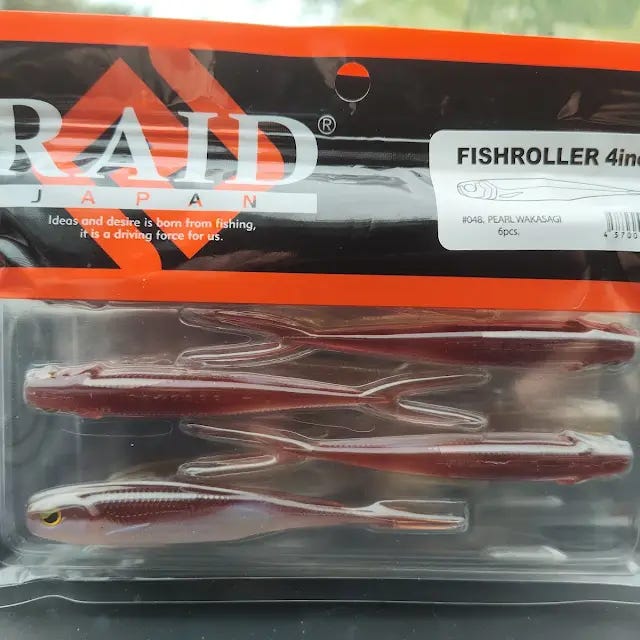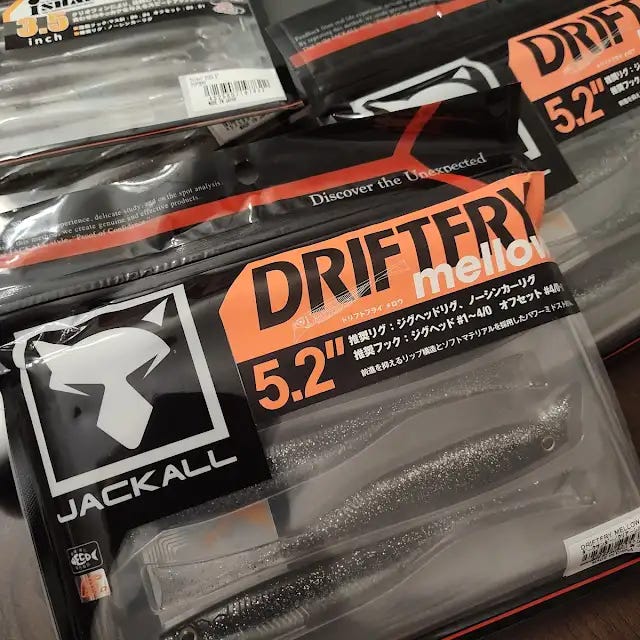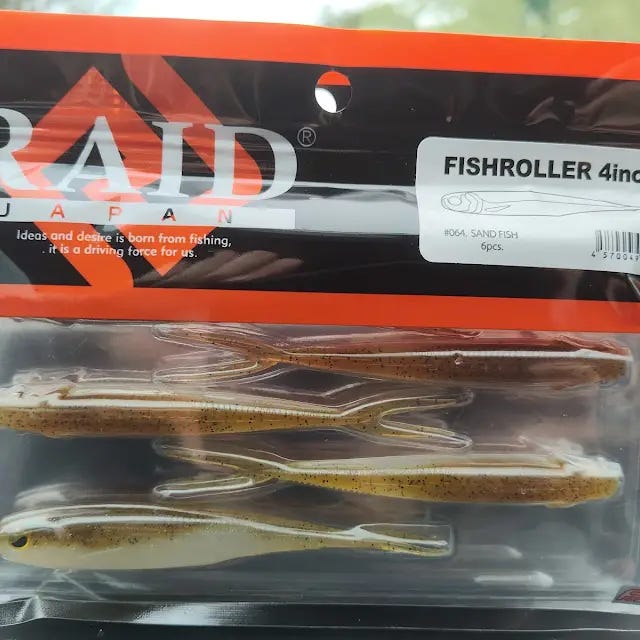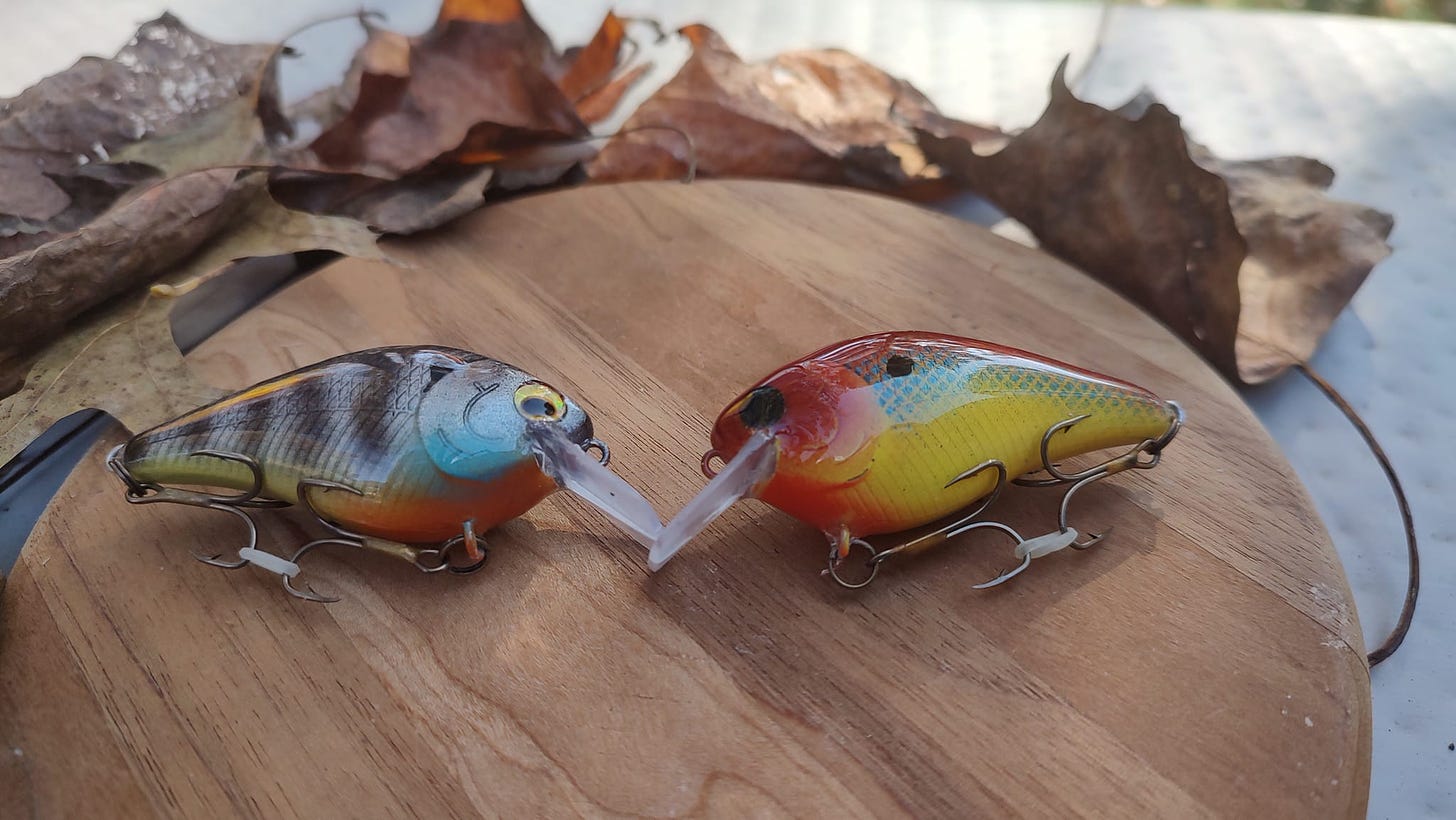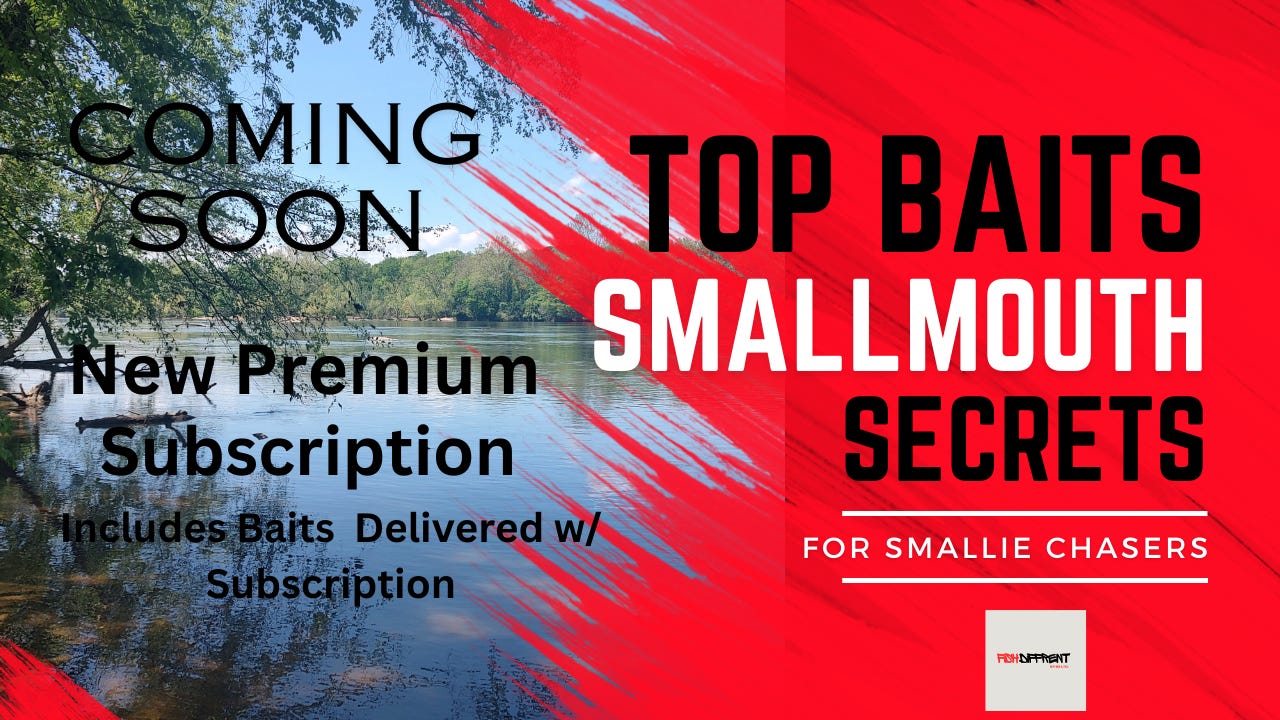Got Minnows? How Much Do Smallmouth Anglers Know About Minnows and How To Effectively Use It To Locate More Smallmouth?
"Minnow"- Probably the Second Most Used Word at ICAST Last Week
Minnows in North American River Systems: Life Cycle, Species, and Seasonal Behaviors
We just heard a ton about minnows at ICAST 2024 down in Florida and how the market is moving back to finesse fishing. Of course Finesse Fishing never left us as Smallmouth Anglers but it is finally good to see the market move back and the new developments that can contribute to increased catch rates for Smallies.
🐟What are Minnows really and what is their life cycle?
✨How will innovations in Minnow baits influence catch rates of Smallmouth throughout the year ?
🎣What are some of the best “Minnow” style baits out there for use on our river systems?
Minnows, belonging to the family Cyprinidae, are small, often schooling fish found in freshwater systems throughout North America. This group includes a variety of species with diverse behaviors, habitat preferences, and reproductive strategies. Here, we'll explore the life cycle of minnows, the different kinds found in North American river systems, their seasonal behaviors, water temperature preferences, and their reproduction process.
Life Cycle of Minnows
Egg Stage:
Minnows typically lay eggs in shallow, well-oxygenated waters.
Eggs can be adhesive, sticking to substrates such as rocks, plants, or gravel.
Depending on the species, eggs hatch within a few days to a couple of weeks.
Larval Stage:
Upon hatching, larval minnows are very small and often stay near the spawning site.
They feed on microscopic organisms like plankton and small invertebrates.
The larval stage lasts a few weeks to a couple of months, depending on species and environmental conditions.
Juvenile Stage:
As they grow, juvenile minnows begin to resemble adult fish in appearance.
They continue to feed on small invertebrates and algae.
This stage can last several months to a year.
Adult Stage:
Adult minnows are typically less than 4 inches long, though some species can grow larger.
They reach sexual maturity within 1-2 years.
Adults form schools and exhibit complex social behaviors.
Types of Minnows in North American River Systems
Common Shiner (Luxilus cornutus):
Found throughout the eastern and central United States and southern Canada.
Prefers clear, fast-flowing streams with rocky or gravelly substrates.
Fathead Minnow (Pimephales promelas):
Widespread across North America, from Canada to Mexico.
Thrives in a variety of habitats, including slow-moving streams, ponds, and lakes.
Known for their use as baitfish and in toxicity testing.
Bluntnose Minnow (Pimephales notatus):
Common in the eastern United States.
Inhabits streams, rivers, and lakes, often in areas with sandy or muddy bottoms.
Golden Shiner (Notemigonus crysoleucas): A big favorite of Susky Smallies
Found throughout the eastern United States and parts of Canada.
Prefers weedy, slow-moving streams, ponds, and lakes.
Blacknose Dace (Rhinichthys atratulus):
Distributed in the northeastern United States and southeastern Canada.
Prefers small, clear streams with rocky or gravelly bottoms.
Seasonal Behaviors and Water Temperature Preferences
Spring:
Behavior: Increased activity as water temperatures rise. Minnows move into shallower areas to spawn.
Temperature Preferences: Most minnows prefer water temperatures between 50°F and 75°F (10°C - 24°C) for spawning.
Reproduction: Spawning typically occurs in late spring to early summer. Males may exhibit territorial behavior, and some species build nests or clean spawning sites.
Summer:
Behavior: Minnows are highly active, feeding and growing. They often form large schools.
Temperature Preferences: They prefer water temperatures between 60°F and 80°F (15°C - 27°C).
Habitat Use: They may seek cooler, deeper waters or shaded areas during peak summer heat.
Fall:
Behavior: Feeding activity may increase to build energy reserves for winter. Some species may have a secondary, smaller spawning period.
Temperature Preferences: They remain active in temperatures between 50°F and 70°F (10°C - 21°C).
Habitat Use: Minnows start to move to deeper waters or areas with stable temperatures.
Winter:
Behavior: Activity levels decrease as water temperatures drop. Minnows enter a state of reduced metabolic activity.
Temperature Preferences: They prefer stable temperatures, typically avoiding freezing conditions.
Habitat Use: They seek deeper pools or areas with slow-moving water that are less likely to freeze.
Reproduction of Minnows
Spawning Sites: Minnows choose shallow areas with clean substrates. Some species lay eggs in nests built by males, while others scatter eggs over gravel or aquatic vegetation.
Spawning Behavior: Males often become more colorful and may perform courtship displays. In some species, males defend territories and nests.
Egg Development: Eggs hatch within a few days to weeks, depending on species and water temperature. The larvae remain near the spawning site, feeding on microscopic organisms.
Juvenile Growth: Juveniles grow rapidly during the warm months, feeding on small invertebrates and algae. They form schools and gradually migrate to different habitats as they mature.
Minnows are small but ecologically significant fish in our river systems. Their life cycle includes stages from egg to adult, with specific behaviors and habitat preferences that vary throughout the year. Understanding the life cycle and seasonal behaviors of minnows is crucial for conservation efforts and managing freshwater ecosystems, as these fish play vital roles in the food web and ecosystem health.
Using Minnow-Type Baits to Catch Smallmouth Bass in River Systems
Smallies are aggressive predators and are known for their affinity for baitfish, making minnow-type baits highly effective for targeting them. Here’s how Smallmouth anglers can use these baits and the different methods to present them in river systems.
Types of Minnow-Style Baits
Soft Plastic Minnows:
Examples: Zoom Super Fluke, Berkley PowerBait Minnow popular name brand but above are Raid Japan Fish Roller and Jackall Drift Fry and here the Evergreen Last Ace which comes in various sizes to suit our needs but the 45 is really effective which is smaller version of these here:
These baits mimic the look and movement of real minnows and can be rigged in various ways. Focus on the action or the roll in these baits as well as those that are truly realistic to your bait fish in your river.
Crankbaits:
Examples: Rapala Shad Rap, Strike King KVD 1.5, Lake’s Edge Lures
Crankbaits are designed to imitate the swimming action of a fleeing minnow.
Jerkbaits:
Examples: Rapala X-Rap, Megabass Vision 110, LuckyCraft Pointer
Jerkbaits have a darting action that mimics an injured minnow.
Swimbaits: (boot or paddle tail)
Examples: Keitech Swing Impact, Googan Saucy Swimmer, Jackall Peaceton Shad, Bottomup Volup Swimmer, Dstyle Brunno Shadtail
These baits have a lifelike swimming action and are often used with a jig head.
Spinnerbaits:
Examples: War Eagle Spinnerbait, Booyah Blade, Jackall Super Doon, Dstyle Da, Nories Wind Range, O.S.P High Pitcher
Spinnerbaits have a spinning blade that creates flash and vibration, resembling a school of minnows.
Methods to Present Minnow-Style Baits
Casting and Retrieving:
Method: Cast the bait upstream and retrieve it with the current, mimicking the natural movement of minnows.
Application: Works well with crankbaits, soft plastic minnows, and swimbaits.
Tips: Vary the speed of retrieval and add occasional pauses to mimic an injured minnow.
Jigging:
Method: Use a jig head with a soft plastic minnow or swimbait, and lift and drop the bait to mimic a minnow feeding on the bottom.
Application: Effective in deeper pools and around structure.
Tips: Focus on areas with rocky bottoms, ledges, and drop-offs where Smallmouth are likely to ambush prey.
Twitching:
Method: Use Jerkbaits or soft plastic (Fluke style) minnows rigged weightless, and twitch the rod tip to create a darting action.
Application: Ideal for shallow water and areas with clear visibility.
Tips: Experiment with different cadences of twitching and pausing to trigger strikes.
Drifting: (Throw in the Hover Strolling Methods into this mix)
Method: Drift a soft plastic minnow or Swimbait naturally with the current.
Application: Effective in fast-moving water and riffles where Smallmouth are feeding on disoriented minnows.
Tips: Use a light jig head or no weight to allow the bait to drift naturally. Great Lakes Finesse Hover Minnow can be paired with the brands own rig as well or the Jackall Drift Fry option shown above.
How can the Raid Japan Fish Roller be utilized or even the Great Lakes Finesse new soft plastic minnows?
Drop Shotting:
Method: Rig a soft plastic minnow on a drop shot rig and fish it vertically.
Application: Best for fishing deep pools, undercut banks, and other structure.
Tips: Keep the bait just off the bottom and impart subtle movements to mimic a minnow hovering in place. Great Lakes Finesse Drop Shot Minnow is an option here coming in 2.75 inches.
Seasonal Considerations
Spring:
Behavior: Smallmouth bass move into shallower areas to spawn.
Bait Choice: Soft plastic minnows and Jerkbaits.
Presentation: Slow and steady retrieves near spawning beds and shallow flats.
Summer:
Behavior: Smallmouth are active and often found in deeper, cooler water.
Bait Choice: Crankbaits, Swimbaits, and drop shot rigs.
Presentation: Faster retrieves and jigging in deeper pools and around structure.
Fall:
Behavior: Smallmouth feed aggressively to build energy for winter.
Bait Choice: Crankbaits, Jerkbaits, and Spinnerbaits.
Presentation: Vary retrieves to find the most effective speed and action. Focus on feeding areas where minnows are concentrated.
Winter:
Behavior: Activity levels decrease, and Smallmouth move to deeper, more stable environments.
Bait Choice: Soft plastic minnows and drop shot rigs.
Presentation: Slow and methodical presentations in deep water and around structure.
Probably one of the best baits that can be used for a variety of presentations and differing seasons are the minnow class baits from Fish Arrow. I have been using this for a few years and they universally catch Smallmouth no matter the season on our regional river systems and have been known to drop big limits on rivers like Susquehanna for example. Fish Arrow has a similar offering but with a boot or paddletail versus the straight tail and its always a good idea to have both styles in order to search what the Smallies want ion any given day.
Like the Raid Fish Roller, Fish Arrow also has a Split Tail 4 or 5 inch in this same format as well which is becoming increasingly popular given at times its harder to get the other JDM brands split tails known to catch like the Fish Roller.
The Flash J Straight Tail comes in perfectly matched 3 & 4 inch sizes for most river baitfish with a variety of colors but the patterns that mirror Golden Shiner, Tennessee/Threadfin Shad ones always seem to be the best Smallie catchers.
Take-Away-
Using minnow-type baits to catch Smallies in river systems can be highly effective if you understand their behavior and preferences. Vary your presentation techniques and adjust your approach based on seasonal changes to maximize your success. By mimicking the natural movement and appearance of minnows, you can entice even the most cautious Smallmouth to strike.
Understanding the behavior patterns of your bait forage specie will increase your ability to know how the Smallmouth are feeding in your river. Locating these forage species like minnows will provide you the areas of opportunity where the Smallmouth will be sooner than later in the day to feed on them especially when these minnows fill up the shallows during the forage spawning periods.
⭐⭐
If you enjoyed this please consider being a FREE SUBSCRIBER and JOINING THE CHASE as we learn to understand SMALLMOUTH more on this journey!
Featured Brands—- Keitech, Deps, Jackall, Nories, Issei, Fish Arrow, Megabass, Evergreen, Bait Breath, Duo Realis, BottomUp, Hideout, Dstyle , Great Lakes Finesse, Nikko Baits,and many others…..
Subscribe TODAY for FREE and then this late summer JOIN the Premium Newsletter which will not only provide more in depth analysis but also locations for quality Smallmouth fishing and how to target them with the right bait presentations while also DELIVERING (1) BAIT per month to SUBSCRIBERS right to their door to fish with on their next river trip!!
Resources:
Facebook Groups:
Smallmouth Army:
https://www.facebook.com/groups/1322144201945490
Smallie Chaser River Bassin:
https://www.facebook.com/groups/885248796934955many challenges for Smallmouth anglers especially those fishing from a kayak or wade fishing.



